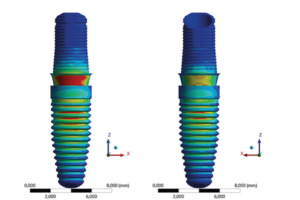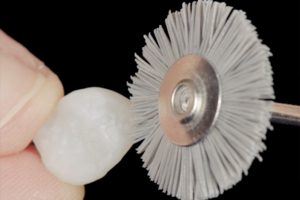AUTORES
Rafael Ortega-Lopes
Mestre e doutor em Cirurgia e Traumatologia Bucomaxilofaciais – FOP-Unicamp.
Claudio Ferreira Nóia
Mestre e doutor em Cirurgia e Traumatologia Bucomaxilofaciais – FOP-Unicamp.
Henrique Duque de Miranda Chaves Netto
Mestre e doutor em Cirurgia e Traumatologia Bucomaxilofaciais – FOP-Unicamp.
Valdir Cabral Andrade
Mestrando em Cirurgia e Traumatologia Bucomaxilofaciais – FOP-Unicamp.
Castelo Pedro Vemba Cidade
Mestrando em Cirurgia e Traumatologia Bucomaxilofaciais – FOP-Unicamp.
Renato Mazzonetto (in memoriam)
Ex-professor titular da Área de CTBMF – FOP-Unicamp.
RESUMO
Este estudo retrospectivo teve como objetivo avaliar a relação entre a perda tardia dos implantes com o tempo de carga protética, realizados na Faculdade de Odontologia de Piracicaba, durante o período de 11 anos. Para isso, foram selecionados 875 prontuários de pacientes submetidos a tratamento com implantes e prótese sobreimplantes durante um período de 11 anos, totalizando 939 implantes. Dos 55 implantes que foram perdidos após a reabilitação concluída e sob função, fez-se a análise do tempo entre a instalação da prótese e o momento do fracasso da reabilitação. A análise estatística utilizada foi a do teste t para amostras independentes (p < 0,05) e posterior modelo de regressão logística binomial, a fim de quantificar os resultados encontrados. Como resultado foi observada influência estatisticamente significante entre a perda tardia dos implantes com o tempo da reabilitação em função (p = 0,000), apresentando risco de perda 0,7 vezes menor a cada mês. Com este estudo, concluiu-se que a perda tardia dos implantes é maior nos primeiros meses da reabilitação e após o primeiro ano, a chance de fracasso diminui consideravelmente.
Unitermos – Implantes dentários; Perda tardia; Fatores de risco.
ABSTRACT
This retrospective study evaluated the association between late failure of osseointegrated implants and prosthetic loading time, carried in the Piracicaba Dental Scholl during the period of 11 years. To this end, we selected 875 charts of patients treated with implants and prostheses sobreimplantes over a period of 11 years, totaling 939 implants. Of the 55 implants that were lost after rehabilitation completed and in function, did the analysis of time between the onset of the prosthesis and the time of the failure of rehabilitation. The statistical analysis used was the t test for independent samples (with p < 0.05) and later binomial logistic regression model in order to quantify the results (odds ratio calculation). As a result, statistically significant influence was observed between the late loss of the implants over time as a function of rehabilitation (p = 0.000), presenting a risk of loss 0.7 times less each month. This study concluded that the late loss of implants is higher in the first months of rehabilitation, and after the first year, the chance of failure is significantly reduced.
Key Words – Dental implants; Late implant failure; Risk factors.
Recebido em nov/2011
Aprovado em nov/2011





